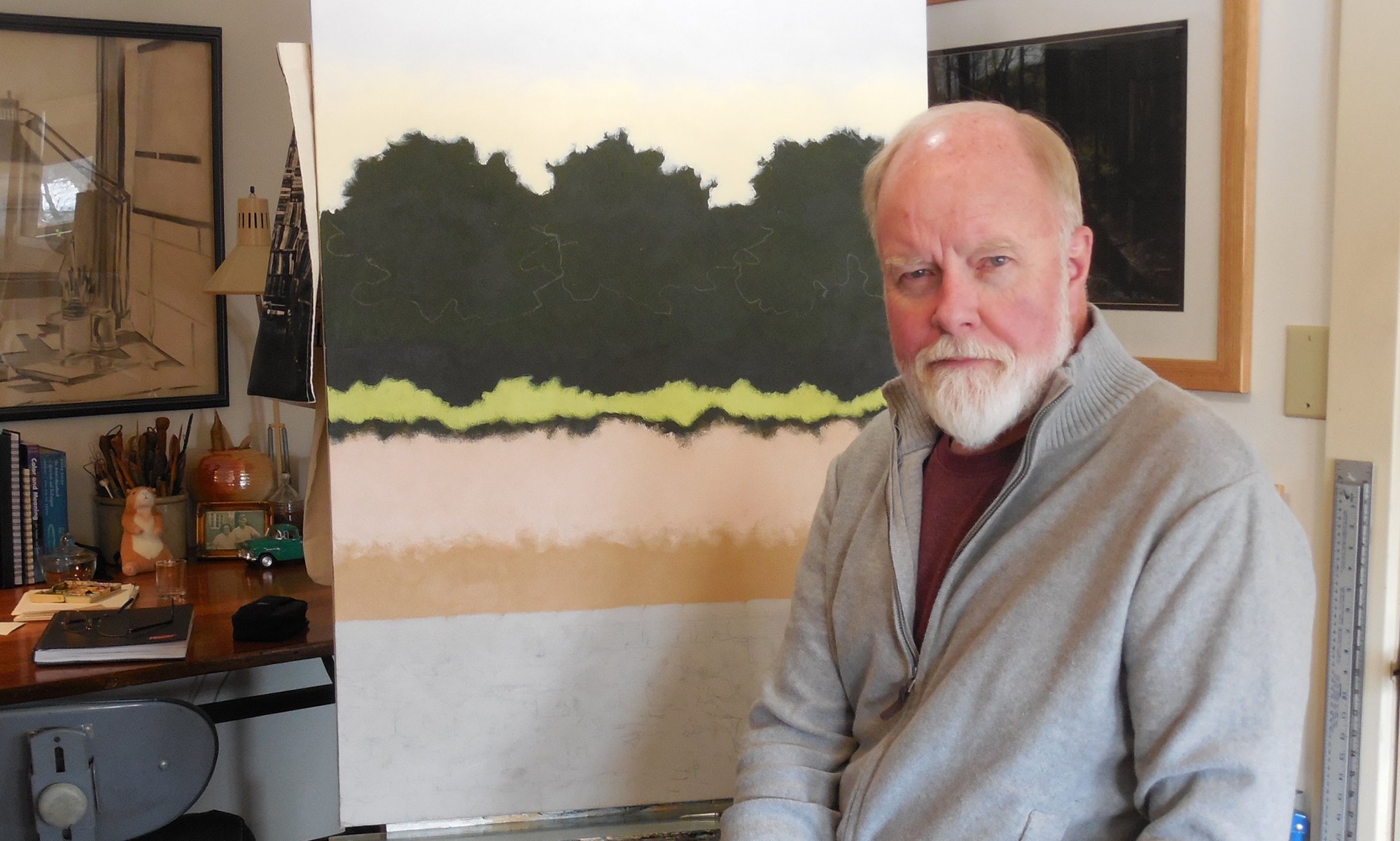
Interested in the faculty behind our programs? Get to know them through our monthly faculty spotlight.
Dr. Gaylund K. Stone currently serves as a professor and department chair of art here at Concordia. During the almost three decades that Dr. Stone has been at Concordia, he also served as the dean of the school of arts and sciences until 2015, remaining art department chair most of those years.
Why did you choose Concordia?
I came here after high school and college teaching in Oklahoma. My wife was originally from Wisconsin and wanted to be closer to her parents, and I was pleased to find a Christian university needing to build an Art Department.
What does an average day in your life look like?
Since leaving the deanship, I’ve been able to devote more time to my teaching and my work in the studio (I’m a painter – oil and acrylic). My average day begins at 5 a.m., with some reading before coming to campus around 7:30. After my teaching schedule and departmental tasks for the day, I usually go home and spend time on the usual tasks of home repair, yard work, and studio work, as time permits.
What do you love most about Concordia?
I’d have to say that I love the focus on faith and the students who are drawn here. A pastor once told me that we should always look for places where God is working and try to be there. I have seen God working in the lives of students here and it is a pleasure to be at least a small part of that.
What’s your education and career background?
I attended a public high school in Ohio and then studied at Princeton University, first as a pre-med student and then, when medicine ceased to be of interest, I changed majors to art and archaeology, graduating with majors in art history and painting, and a great deal of course work in biology and chemistry.
After graduating from Princeton in 1971, I traveled the country, drawing and painting (after all, it was the 70s). After about six months, I settled in Oklahoma where my pre-med background allowed me to teach earth science (8th grade) and physical science (9th grade). While teaching in junior high school, I earned a master’s in art education at Southwestern Oklahoma State University (SWOSU). I then worked for the Oklahoma State Department of Education as an arts coordinator for two years before taking a job teaching at a high school (art and one honors biology class). I remained there (Clinton, OK) for 10 years, teaching full-time at the high school and part-time at SWOSU before coming to Concordia in 1991.
What are you most passionate about in your work here at Concordia?
While I am passionate about my work – both teaching and in the studio – my interest has been the lives of the students and the application of their faith to their chosen work.
What’s the one key lesson from your courses/work here at Concordia that you hope students take away from interacting with you and learning from you?
The hope I have for my students is the same as the hope I have for my own children – that they find something that they love to do as their life’s work and trust that God will lead them and provide for them. Education often presents life as a matter of disconnected facts and events. Nothing is really disconnected. We have one God, the Creator of all – and life should be seen as immanently meaningful.
What’s the most interesting thing about your field of study that the general public might not know?
When people think of “art education,” they often think back to their own experiences in art classes (whether pleasurable or not) and think of art as merely “making things.” But art education, if properly conducted, is not simply a matter of teaching people how to draw, paint, sculpt, etc. Colossians 1:15 refers to Jesus as the “image of the invisible God.” What we do in art education is to lead students to the means by which they can take the intangibles of their lives (thoughts, ideas, feelings, dreams, faith) and give them tangible form so that they might be reflected upon. In its essence, it is incarnational. It is how we hold on to the fragile and fleeting experiences of our lives. The arts do so directly with images and words. Other disciplines (science, math, etc.) do the same but in somewhat more abstract languages.
Lastly, why should students study your field/discipline?
Primarily for the reasons described above. The purpose of art is not necessarily to make art objects (although some of the objects made may seem as such). It is to reflect upon one’s life; to see more clearly; to think more clearly and to communicate those thoughts to others. Such reflections cannot be fully done in the absence of a consideration of faith since they always lead us to the primary questions regarding our own existence.
Why should students consider Concordia?
Any place or experience is what you make of it. If you come to college to only get a degree, that is what you will probably get, and perhaps little else. Concordia offers an opportunity to engage in discussions of faith and meaning, to make connections with people and ideas – those similar to your own and those different. It offers the opportunity to grow in your relationship with God and to make lasting friendships with others. It is a place where you can be challenged but always within a community that supports you.
If you’re interested in studying art education here at Concordia, you can explore our bachelor’s degree program or our master’s degree program. Both are offered face-to-face at our Mequon campus.
—
If this story has inspired you, why not explore how you can help further Concordia's mission through giving.